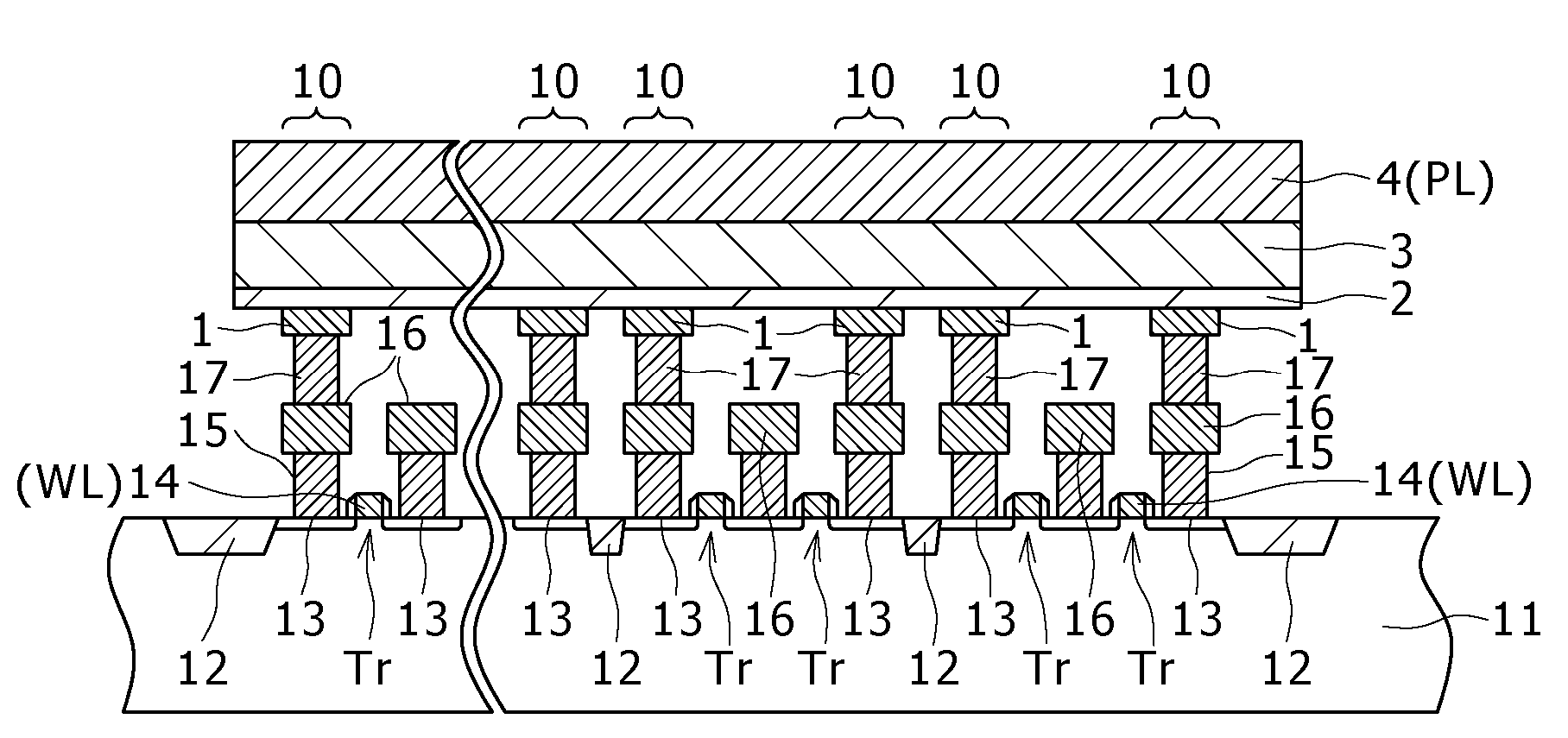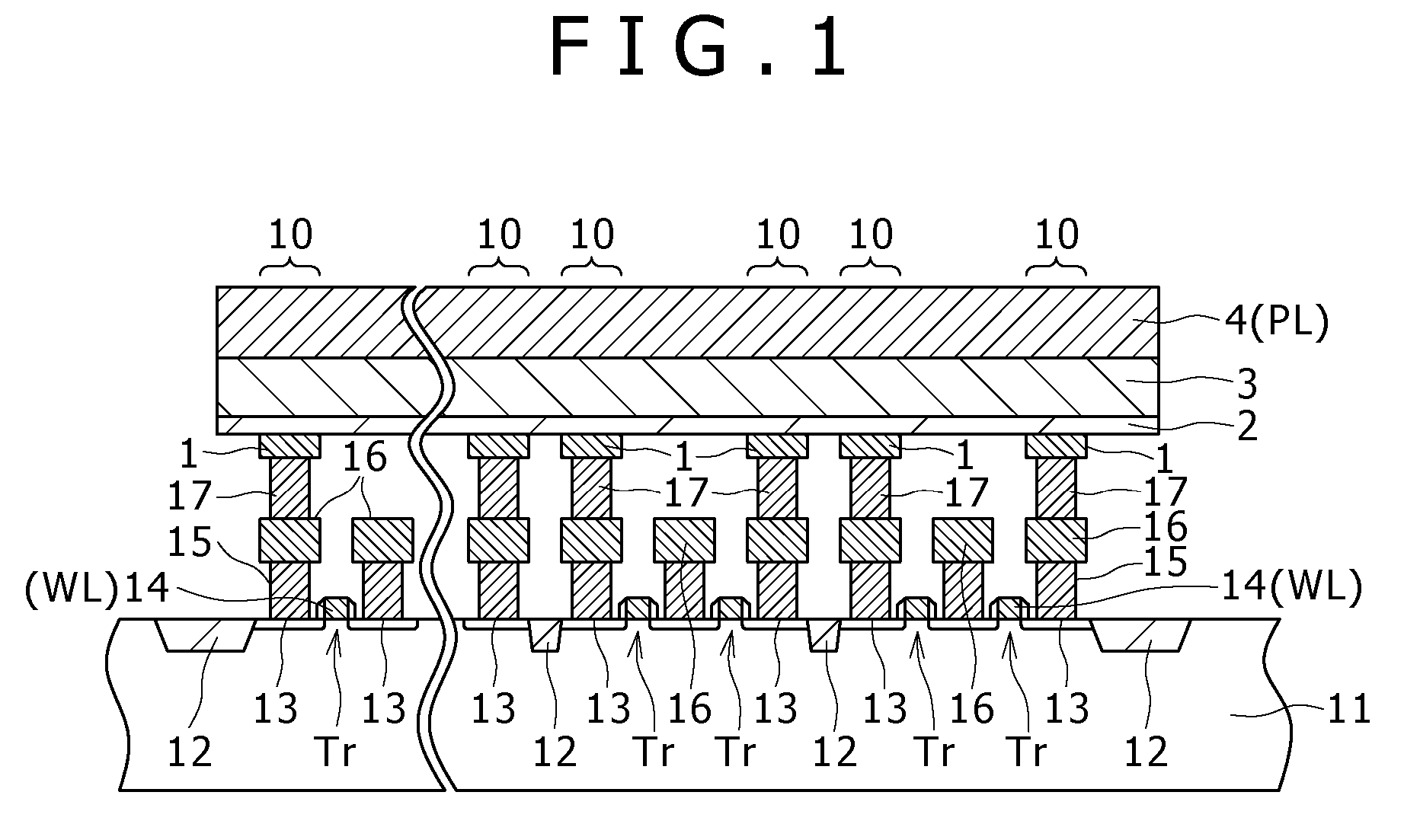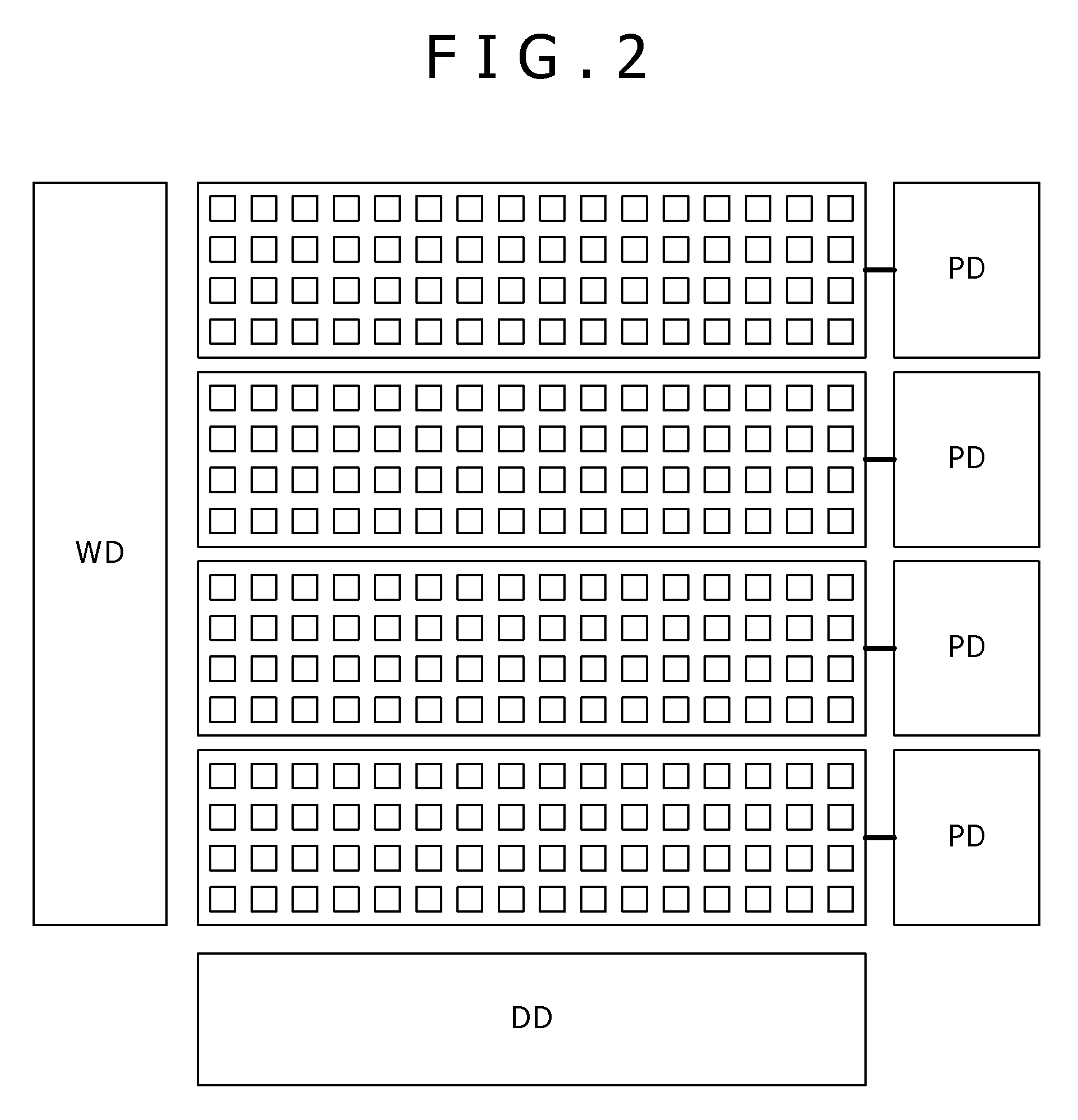Memory device
a memory device and memory technology, applied in the field of memory devices, can solve the problems of increased consumption current, difficulty in and difficulty in memory device high-speed driving, so as to achieve easy patterning in memory element manufacturing and high-speed driving of memory elements
- Summary
- Abstract
- Description
- Claims
- Application Information
AI Technical Summary
Benefits of technology
Problems solved by technology
Method used
Image
Examples
first embodiment
[0085]FIG. 2 is a schematic diagram for explaining a memory device in which each unit memory block includes memory cells of horizontal 16 bits by vertical 4 bits.
[0086]In the memory device shown in the drawing, a memory array of 256 bits includes four unit memory blocks each having memory cells of horizontal 16 bits by vertical 4 bits, and the four memory blocks are arranged along the vertical direction. The memory elements of the memory cells in each unit memory block (horizontal 16 bits by vertical 4 bits) are formed of a single high resistance film, a single ion source layer and a single upper electrode. Specifically, in the first embodiment, a single plate is quadrisected along the vertical direction so that four separated plates are formed.
[0087]The word lines are connected to a word driver WD, and the bit lines are connected to a data driver DD. Each of the upper electrodes of the respective separated plates is connected to a corresponding plate driver PD. Specifically, the up...
second embodiment
[0090]FIG. 3 is a schematic diagram for explaining a memory device in which each unit memory block includes memory cells of horizontal 4 bits by vertical 16 bits.
[0091]In the memory device shown in the drawing, a memory array of 256 bits includes four unit memory blocks each having memory cells of horizontal 4 bits by vertical 16 bits, and the four memory blocks are arranged along the horizontal direction. The memory elements of the memory cells in each unit memory block (horizontal 4 bits by vertical 16 bits) are formed of a single high resistance film, a single ion source layer and a single upper electrode. Specifically, in the second embodiment, a single plate is quadrisected along the horizontal direction so that four separated plates are formed.
[0092]The word lines are connected to a word driver WD, and the bit lines are connected to a data driver DD. Each of the upper electrodes of the respective separated plates is connected to a corresponding plate driver PD. Specifically, t...
third embodiment
[0097]FIG. 4 is a schematic diagram for explaining a memory device in which each unit memory block includes memory cells of horizontal 4 bits by vertical 4 bits.
[0098]In the memory device shown in the drawing, a memory array of 256 bits includes 16 (horizontal 4 by vertical 4) unit memory blocks each having memory cells of horizontal 4 bits by vertical 4 bits. The memory elements of the memory cells in each unit memory block (horizontal 4 bits by vertical 4 bits) are formed of a single high resistance film, a single ion source layer and a single upper electrode. Specifically, in the third embodiment, a single plate is quadrisected along the vertical and horizontal directions, respectively, so that 16 separated plates are formed.
[0099]The word lines are connected to a word driver WD, and the bit lines are connected to a data driver DD. Each of the upper electrodes of the respective separated plates is connected to a corresponding plate driver PD. Specifically, the upper electrodes of...
PUM
 Login to View More
Login to View More Abstract
Description
Claims
Application Information
 Login to View More
Login to View More - R&D
- Intellectual Property
- Life Sciences
- Materials
- Tech Scout
- Unparalleled Data Quality
- Higher Quality Content
- 60% Fewer Hallucinations
Browse by: Latest US Patents, China's latest patents, Technical Efficacy Thesaurus, Application Domain, Technology Topic, Popular Technical Reports.
© 2025 PatSnap. All rights reserved.Legal|Privacy policy|Modern Slavery Act Transparency Statement|Sitemap|About US| Contact US: help@patsnap.com



